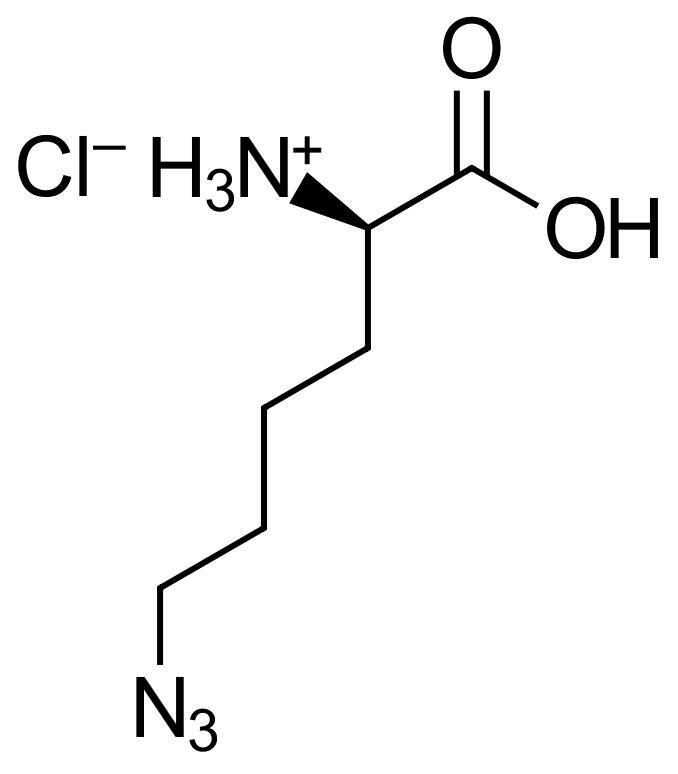6-Azido-D-lysine HCl
Azido-modified amino acids for bioconjugation with alkyne reporters

-
6-Azido-D-lysine HCl as a azide-derivatized amino acid is highly interesting e.g. in the area of peptide synthesis as a powerful tool in the development of new therapeutics and biochemistry research. Such modified amino acids can easily undergo click reaction.
LITERATURE
Synthesis of biologically active nickelocenyl–amino acid conjugates using 1,3-dipolar cycloaddition click reactions, M. A. Raza et al., 2017, Russ. J. Gen. Chem., Vol. 87, p. 2678–2683.
https://doi.org/10.1134/S107036321711024X
Chemically Induced Cell Wall Stapling in Bacteria, S. L. Rivera et al., 2021, Cell Chemical Biology, Vol. 28(2), p. 213-220.
https://doi.org/10.1016/j.chembiol.2020.11.006
Systematic Assessment of Accessibility to the Surface of Staphylococcus aureus, N. J. Ferraro et al., 2021, ACS Chem. Biol., Vol. 16(11), p. 2527–2536.
FAQ
-
Is it possible to generate azide- or alkyne-modified peptides?
With modified amino acids azide- or alkyne-modified peptides can be prepared by solid-phase synthesis.
-
How can de novo protein biosynthesis be monitored?
De novo protein biosynthesis can be monitored by feeding of metabolite analogues (so-called metabolic labeling) and subsequent click reaction. Azido-homoalanine for example is recognized as a methionine analogue and is incorporated into de novo synthesized proteins in methionine-free medium conditions. The resulting proteins contain azide moieties and thus can be detected after click to an alkyne-containing reporter molecule (e.g. a fluorescent dye). This non-radioactive method has major practical advantages compared to traditional 35S amino acid incorporation methods.
Alternatively, O-propargyl-puromycin is efficiently incorporated into proteins during de novo protein biosynthesis and can be used in complete medium. The resulting alkyne protein fragments can be detected via click to azide-containing reporter molecules. -
What click conditions should be used for protein click reactions?
A catalyst system based on CuSO4 and sodium ascorbate is recommended in combination with dye azides to label alkyne-modified proteins. Please also refer to our general Click protocols for more details.
Due to the 20 (21) amino acids that are the building blocks of proteins, the physicochemical properties of proteins are more diverse compared to oligonucleotides, which are just composed of 5 major building blocks. Therefore, finding the optimal click conditions is more difficult compared to oligonucleotides and labeling rates are usually lower. Please note that despite these difficulties detection applications (e.g. de novo protein biosynthesis detection) are easily feasible.
-
Is it possible to generate azide- or alkyne-modified peptides?
-
-
Molecular Formula
C6H12N4O2 *HCI
-
Shelf Life
12 months unopened after receipt
-
Storage Conditions
2-8 °C, dry
-
Molecular Weight
172.19 g/mol * 36.45 g/mol
-
Purity
≥ 98% (HPLC)
-
Physical State
white crystalline powder
-
CAS Number
2098497-01-7 (hydrochloride salt)
1418009-93-4 (free acid) -
Additional name
H-D-Lys(N3)-OH*HCl; N-epsilon-Azido-D-lysine; (R)-2-Amino-6-azidohexanoic acid hydrochloride
-
Molecular Formula

